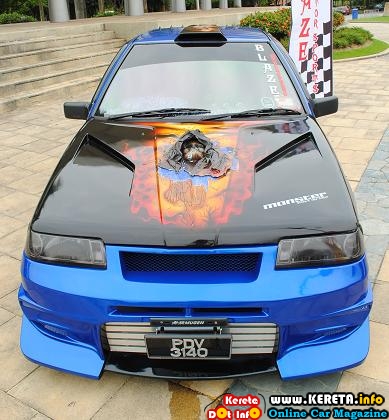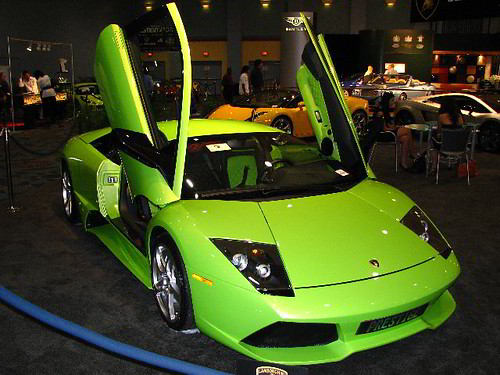|
|
|---|
Friday, June 26, 2009
Lithium and REE: Next Big Thing is charging on. TNR.v, SQM, ROC, GOOG, DAI, NSANY, TM, TTM, BYD, F, AAPPL, RIMM, IBM, HUI, XAU, FXI, CDNX
Posted by andre at 2:57 AM The main message is that Electric Cars are not a fantasy any more and our Next Big Thing is ready to be charged. All major automakers have rolled out Electric Cars models, battery space is getting crowded and technology is moving forward increasing the range and providing safety. Corporations from Tesco to UPS and Canada Post are rolling out electric commercial fleet and it will bring us to mass market with reduces cost per unit needed for tide of change. Junior market is hitting up in Lithium and REE as well and our future bull market plays are staking future deposits.
The main message is that Electric Cars are not a fantasy any more and our Next Big Thing is ready to be charged. All major automakers have rolled out Electric Cars models, battery space is getting crowded and technology is moving forward increasing the range and providing safety. Corporations from Tesco to UPS and Canada Post are rolling out electric commercial fleet and it will bring us to mass market with reduces cost per unit needed for tide of change. Junior market is hitting up in Lithium and REE as well and our future bull market plays are staking future deposits.
by Bruce Mulliken, Green Energy News
An electric vehicle and battery plant in Tennessee. Electric vehicle and component plants in California. Electric vehicle rentals in Maryland. New research in batteries. Is the U.S. really turning to electric drive? The news supports that notion.
Nissan has announced that it has been conditionally approved by the U.S. Department of Energy (DOE) to receive a $1.6 billion loan to modify its Smyrna, Tennessee plant to build battery electric vehicles as well as the batteries to power them. The loan is from DOE’s Advanced Technology Vehicles Manufacturing Loan Program (ATVMLP), a $25 billion program authorized by Congress in 2007. ATVMLP is meant to accelerate the development of vehicles and technologies that increase energy independence, create cars and stimulate the economy.
This is no small venture for Nissan. The modified plant will have the capacity to produce 150,000 electric vehicles a year and 200,000 battery packs. Construction is set to begin late this year and vehicles should be rolling off the assembly line in 2012. But U.S. drivers won’t have to wait until 2012 to get a Nissan all-electric vehicle. The company will launch the zero emission vehicle simultaneously in Japan and the U.S. in 2010, with the first vehicles to be built in Japan. Nissan will shift production to Smyrna when the plant is ready.
Details of the Nissan electric vehicle (whether it is car, light truck or SUV) will certainly emerge during the coming months. The company says only that it will seat five, is highway capable, will use a lithium-ion battery pack and have an initial range of 100 miles.
Tesla Motors also has been conditionally approved under the same DOE ATVMLP loan program. Of the $465 million it will get, $365 million will go to a new plant in Southern California to build the Model S sedan, and $100 million will support a plant in Northern California that will manufacture battery packs and electric drive trains to be used in Teslas and in vehicles built by other automakers, including the Smart For Two city car by Daimler.
The Model S plant will be up and running by 2011 and be able to produce 20,000 cars per year by the end of 2013. Employment will be about 1000.
The battery and electric drive plant will begin pilot production in 2011, and ramp up to full production by 2013. Employment will be about 650.
Not more than 10 miles from where the keys are being punched to write this story, the Maryland Science Center, in Baltimore’s Inner Harbor, has launched AltCar, an electric vehicle rental and car sharing program. Sponsors of the program are battery maker and electric vehicle developer Electrovaya along with ExxonMobil (yes, THAT ExxonMobil).
Electrovaya is keen and specific to point out that Baltimore is one of the nation's first cities to feature an electric car share and rental program using advanced lithium ion battery technology developed by ExxonMobil. (ExxonMobil developed the separator film used in the battery cells.) The Baltimore program actually isn’t the first in the nation to rent electric vehicles to the general public. Highway-capable electric vehicles were available for rent a number of years ago in California, and neighborhood electric vehicles (with a top speed of 25 miles per hour) are available for rent in other communities. But the AltCar program is likely the first to use advanced lithium ion battery technology in the fleet of ten cars now operating.
However, while Baltimoreans can be proud to have an electric vehicle first, they shouldn’t plan on taking the one of the cars too far beyond city limits. The five-door, five passenger urban vehicle available in the program is Electrovaya’s Maya 300 which has a range of 60 or 120 miles. The 120 mile range is plenty to get you to Washington, DC or Annapolis (the state’s capital) but you’ll have to find your own back roads. The Maya has a top speed of only 35 miles per hour. The fine print in the website notes that AltCar will eventually offer plug-in hybrids (and one supposes highway-capable electric vehicles) when they become available.
Rental rates are $14.50 an hour. That price drops to $7.50 - 9.00 per hour for those who join the AltCar car sharing program which is subject to various fees.
The availability of high energy capacity lithium-ion batteries has been the force behind the current resurgence in electric vehicles. Yet as state-of-the-art as the batteries may seem, they’re still a work in progress; research labs are still fooling around with lithium battery chemistries. The latest to jump into lithium battery research is IBM.
Scientists at IBM Research's Almaden lab in San Jose, California, are undertaking a multiyear research initiative to develop affordable batteries to store intermittent energy from wind and solar plants as well as to power electric vehicles. IBM intends to partner with industry leaders, academia and others to explore rechargeable Lithium/Air systems, which IBM says have “the greatest energy density of all practical battery systems and are inherently safer than traditional Lithium-ion systems.”
The company would license any intellectual property that may result from this research rather than manufacture battery cells. IBM will formally launch the initiative at its annual Almaden Institute in San Jose, California, on August 26 and 27.
The company's focus on exploring battery technologies stems from IBM's Big Green Innovations initiative. Announced in November 2006, as part of IBM's investment in 10 new businesses generated by InnovationJam, Big Green Innovations has concentrated its efforts on water management, alternative energy and carbon management."
Subscribe to:
Post Comments (Atom)















0 comments:
Post a Comment